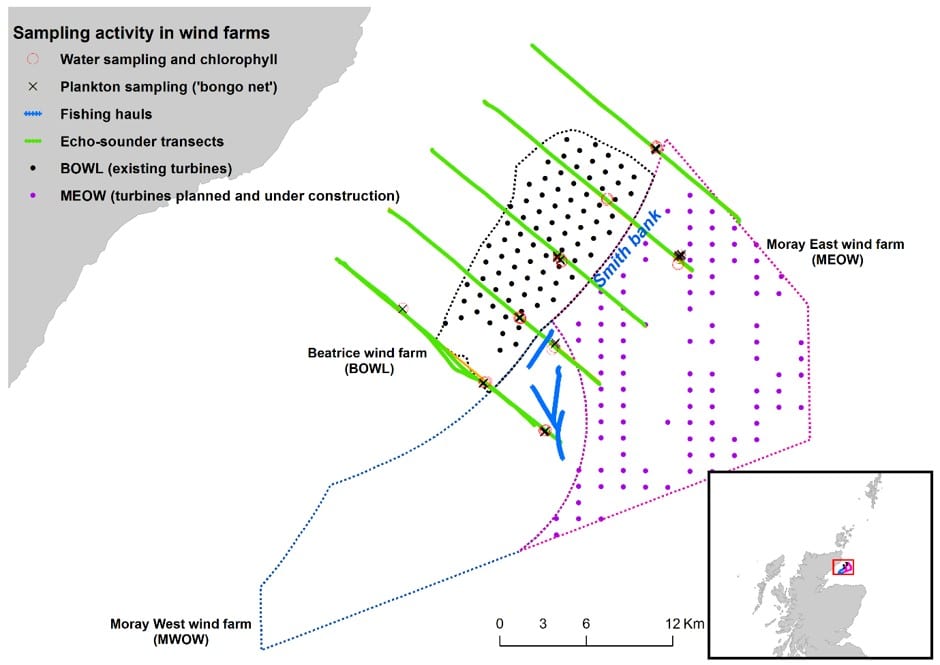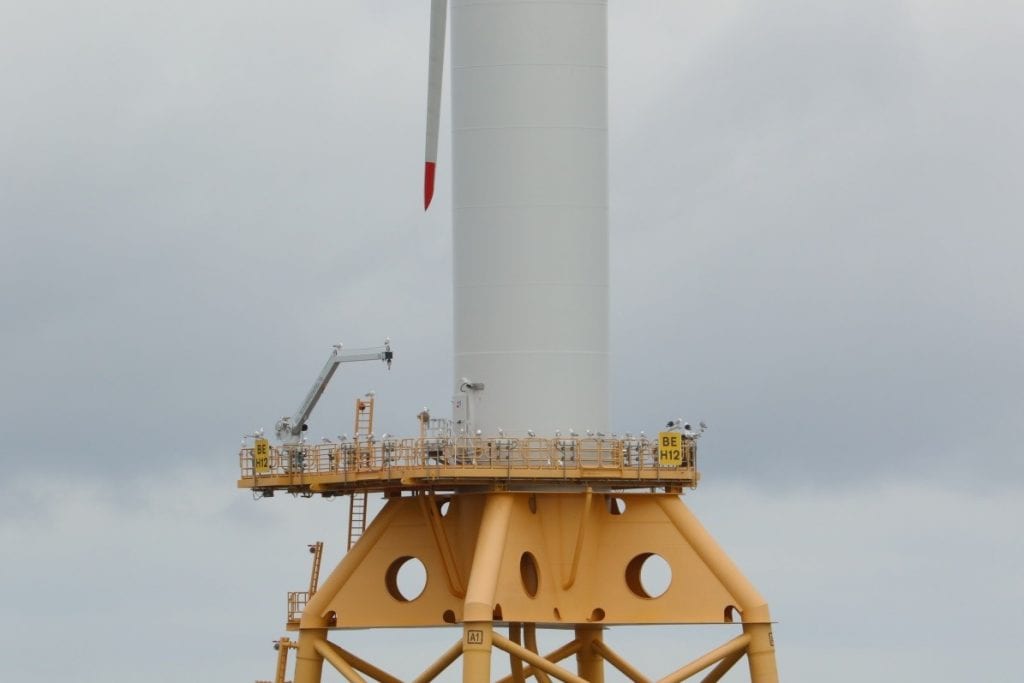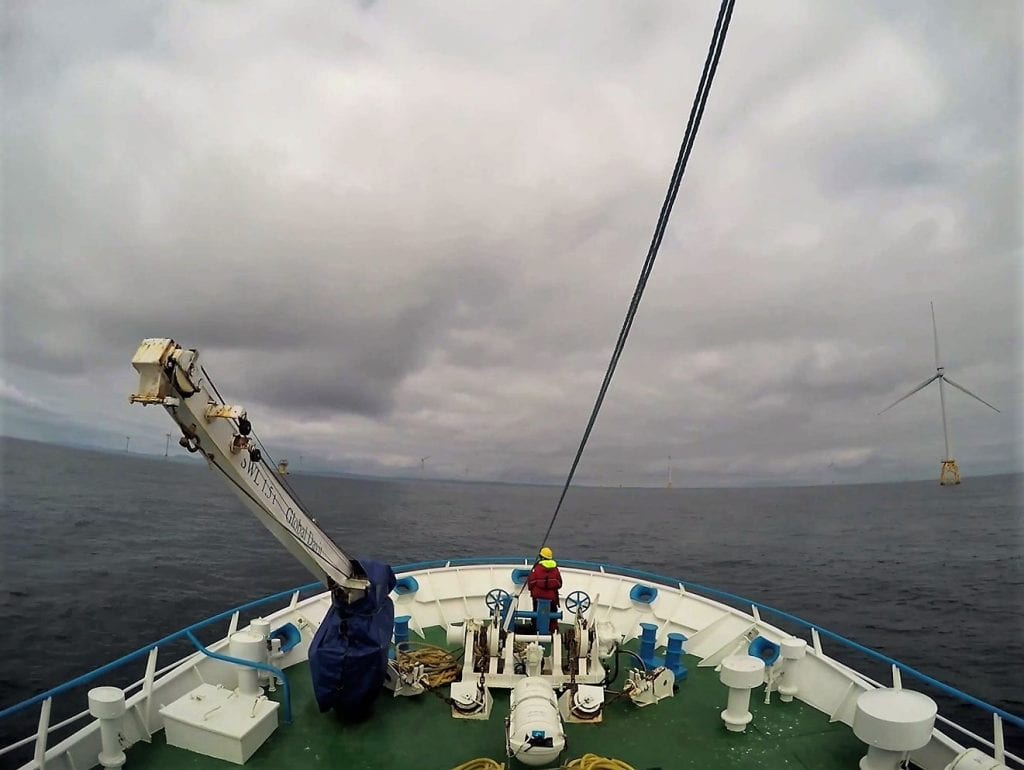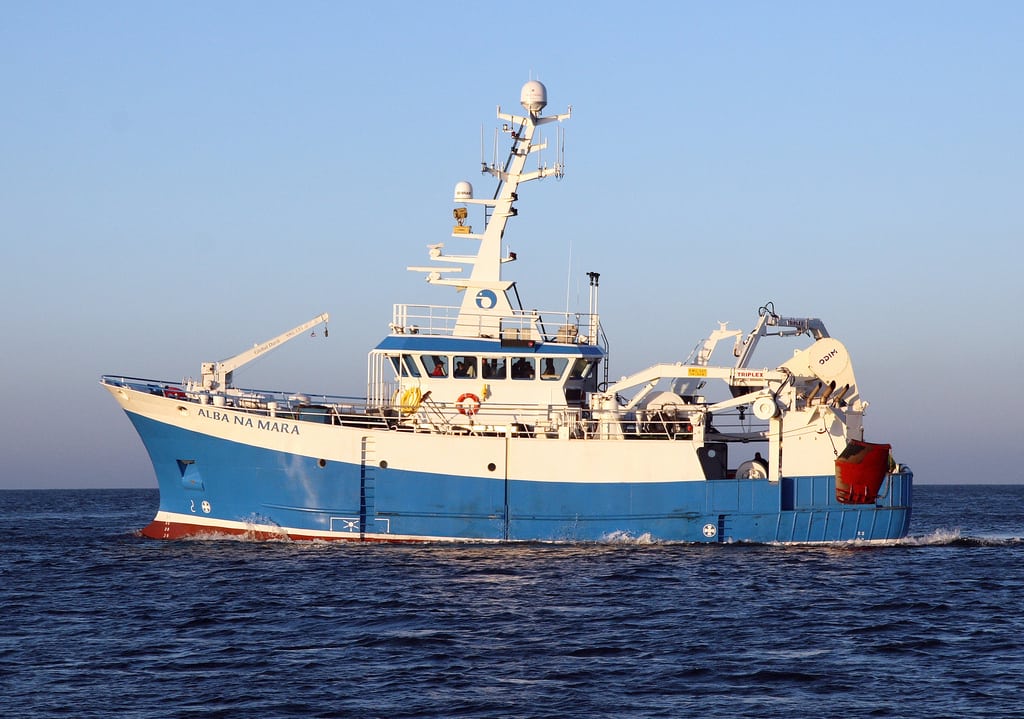Marine
Surveying in the Moray Firth Wind Farm Sites
July 17, 2019 by Marine Directorate Communications No Comments | Category Collaborations, Fisheries, Marine Collaboration Research Forum (MarCRF), Marine Directorate general, Marine Directorate Science, Research Vessel Surveys
Marine Scotland Science (MSS) colleagues and University of Aberdeen (UoA) postgraduate students set sail on the Alba na Mara to undertake a multi-disciplinary survey within the Moray Firth wind farm sites from the 8th – 12th of June 2019. The aim of this survey was to characterise the distribution of the prey species (fish schools, zooplankton patches) across the Smith Bank; in relation to data available on top predator distribution. The data collected will complement the BOWL post-construction digital aerial surveys for seabirds (summer 2019) and UoA studies being conducted as part of the Moray Firth Marine Mammal Monitoring Programme (MMMP).

Figure 1: Location of the sampling/surveying activities completed during the 0919A surveyTime permitting, this survey aimed also to sample plankton specifically in the vicinity of recent piling events.
The areas targeted by this study include:
- Principally, the Beatrice Offshore Windfarm Ltd. (BOWL) which is fully constructed;
- Moray East Offshore Windfarm (MEOW) which is under construction; and
- Moray West Offshore Windfarm (MWOW) which is still to begin construction
Data collected during this survey will support and be analysed as part of one of the visiting student’s Marine Collaboration Research Forum (MarCRF) PhD thesis, entitled: “Assessing responses of top predators to offshore windfarm development”. MarCRF is a cross-disciplinary initiative developed between the UoA and MSS with the aim to facilitate evidence-based, relevant science that supports Marine Scotland policy.
A number of data collection approaches were used to capture the information relevant to predator and prey interactions within the wind farms:

Figure 2: Seabirds roosting on one of the BOWL wind turbines during the 0919A survey. Photo credit: University of Aberdeen, 2019.
- A pelagic fishing net (PT 154) was used to catch mid-water sandeels
- A plankton sampling net composed of two separate 40 cm cylinders with different mesh sizes (200 µm and 68 µm), knows as the ‘bongo net’.
- Hydrographic equipment to capture temperature, salinity and depth as well as water sampling equipment to investigate the phytoplankton at the bottom and middle of the water column.
- Echo-sounder on three frequencies (38, 120 and 200 kHz) to capture acoustic traces of mid water fish species.
- Visual systematic surveying for seabirds.
So, plenty of activity was planned for a short amount of time. Luckily the weather turned out to be ideal for the whole survey and each of the intended surveying activities were performed a number of times.
The final tally of sampling activities came to:
- 5 echo-sounder transects completed;
- One transect was repeated (transect 5);
- 4 mid water fish hauls;
- 15 plankton hauls (live/dead collection)
(1 plankton haul during a piling event); - 9 seabed water samples;
- 9 mid-water samples; and
- 6 full seabird (including marine mammals when sighted) transects.
A range of marine life was seen, and thanks to the eagle eyes of the Alba’s captain and his crew there were even a few minke whale spotted. The massive wind turbines within which we surveyed provided quite a unique backdrop for this trip.
Alba na Mara returned safely to Fraserburgh harbour on the evening of the 11th June, just before the weather turned bad. Timing really is everything.

Figure 3: Visual seabird and marine mammal survey within BOWL wind farm. Photo credit: University of Aberdeen, 2019.
Further Information:
- BOWLing for Prey Species
- University of Aberdeen Website – MarCRF Website
- Marine Scotland Science Topic Sheet
Tags: Alba na Mara, Beatrice Offshore Windfarm, fisheries, MarCRF, Marine Collaboration Research Forum, Moray East Offshore Windfarm, Moray Firth, Moray West Offshore Windfarm, plankton, research, sampling, science, Survey, University of Aberdeen



Leave a comment